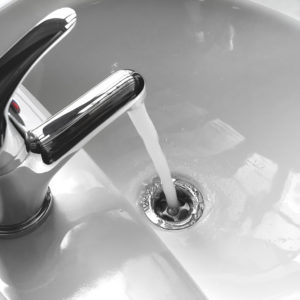As Americans, we take our access to clean, potable drinking water for granted. However, disturbing new findings by the Environmental Protection Agency should make us leery when drinking what comes out of our taps.
In early February, the EPA released a study showing that the levels of per- and polyfluoroalkyl substances, more commonly known as PFAS, are prevalent in the U.S. water supply. PFAS compounds were used for decades to manufacture common items such as cleaning products, carpeting, Teflon cookware, microwave popcorn bags and waterproof attire. Scientists have found probable links between exposure to PFAS and heart disease, thyroid disease, hypertension and preeclampsia, ulcerative colitis, and kidney and testicular cancer.
The recent EPA report shows that PFAS were found in all 50 drinking water supplies that it tested — an alarming increase from a similar 2016 study that found PFAS in fewer than 3 percent of samples. Meanwhile, the Environmental Working Group issued a report stating that up to 110 million Americans could be drinking contaminated water.
In addition to their prevalence, there is disagreement over what constitutes a safe level of PFAS in the drinking water supply. Congressional Democrats are currently investigating the Trump administration’s possible suppression of a report by the Centers for Disease Control and Prevention, which revealed that PFAS are dangerous at a level significantly below the EPA’s current health advisory level. That the U.S. levels are too high should not come as a surprise — United States health advisory levels are nearly twice the amount that is acceptable in Europe.
Affected citizens have had some luck in suing companies for contamination and its resultant health effects — DuPont was forced to pay $671 million to people in West Virginia and Ohio, and 3M recently committed to an $850 million settlement for filtration and cleanup in Minnesota. Unfortunately, financial remuneration is little recompense for loss of health or life.
The EPA recently released its long-awaited management plan for addressing PFAS. Stakeholders have decried it as woefully inadequate — the Union of Concerned Scientists says that it doesn’t set a strong safety standard or make clear how the EPA will protect against future contamination” and both Democratic and Republican Congress members are pressing the EPA to provide more clarity on their plans.
Several states have taken matters into their own hands. California, Connecticut, Maine, Massachusetts, Minnesota, New Hampshire, New Jersey and Vermont have set more rigorous standards than those of the federal government.
The Trump administration’s inaction on this dire public health issue evidences its continued prioritization of corporate profits over American citizens’ health and safety. Earlier this year, the administration limited the EPA’s regulation of potentially toxic chemicals. Rather than evaluating how these chemicals impact the air, ground or water, the Trump administration has mandated that the EPA only evaluate chemicals for harm through direct contact. As the New York Times explains, “The approach means that the improper disposal of chemicals — leading to the contamination of drinking water, for instance — will often not be a factor in deciding whether to restrict or ban them.”
Complying with strong PFAS restrictions and disposal requirements will undoubtedly be costly to corporations. However, the government’s primary responsibility is to protect its citizens’ lives. We cannot allow unchecked corporate greed at this profound human cost. When we turn on our taps, we should trust that the water that flows from them is safe to drink.

